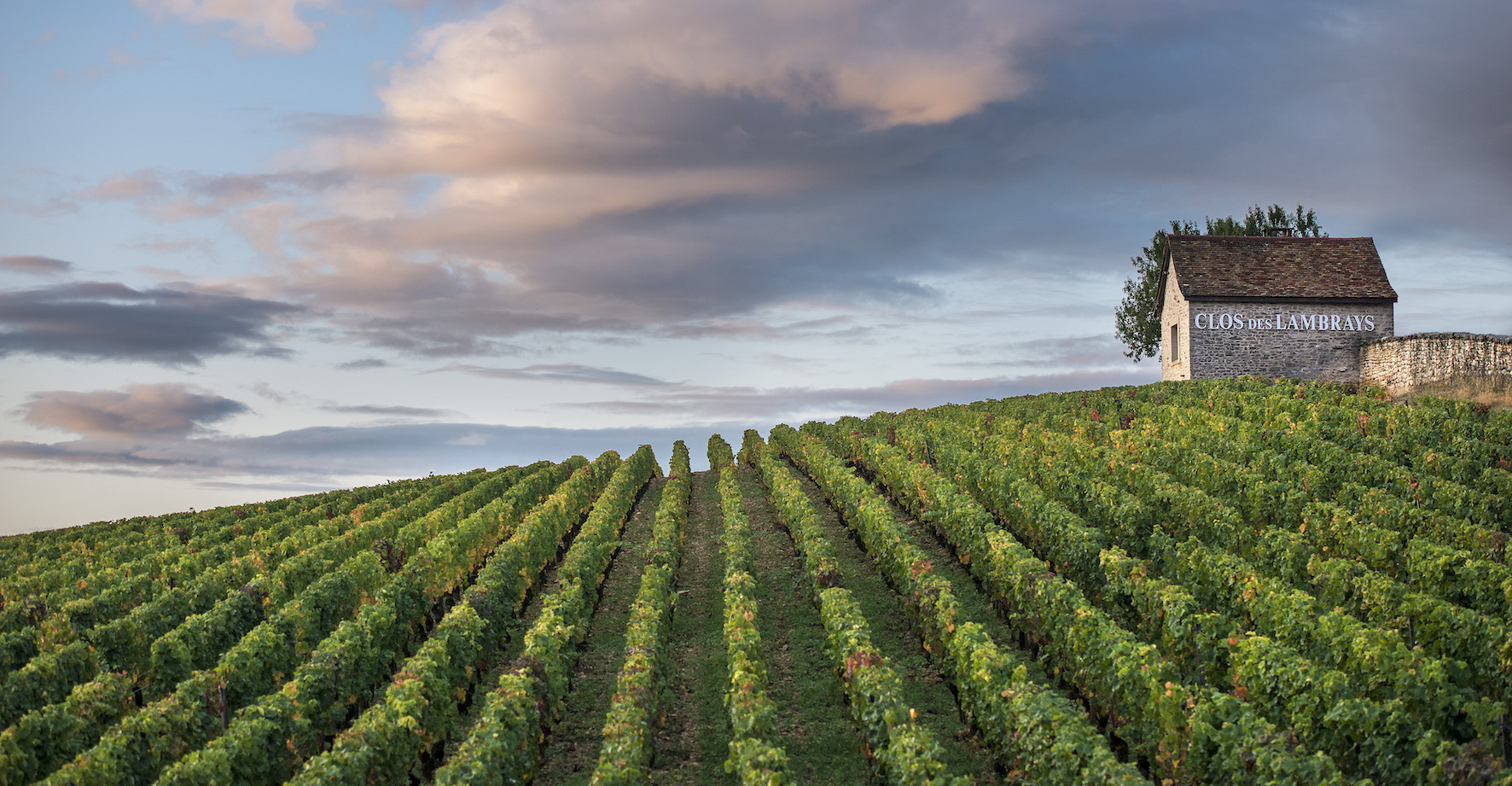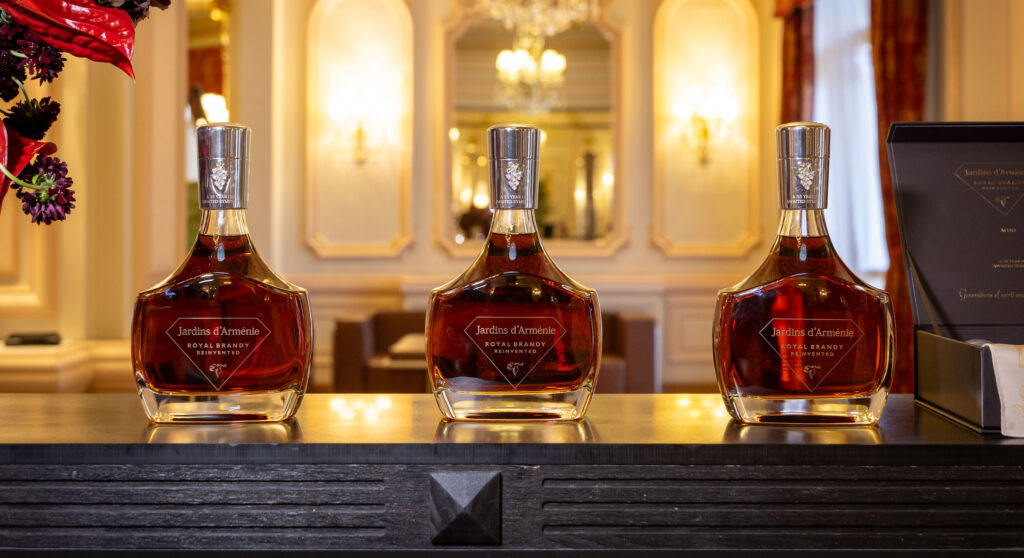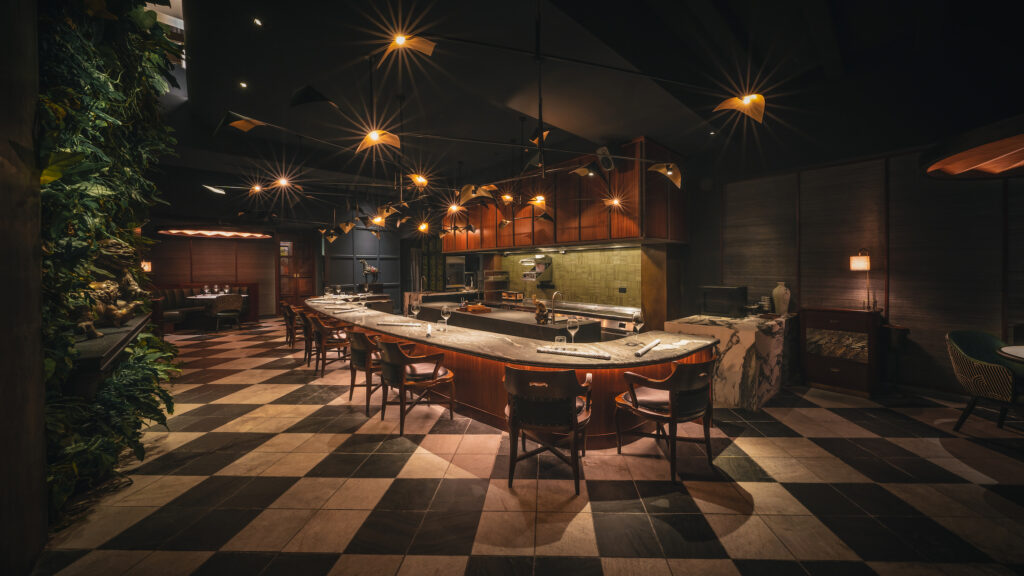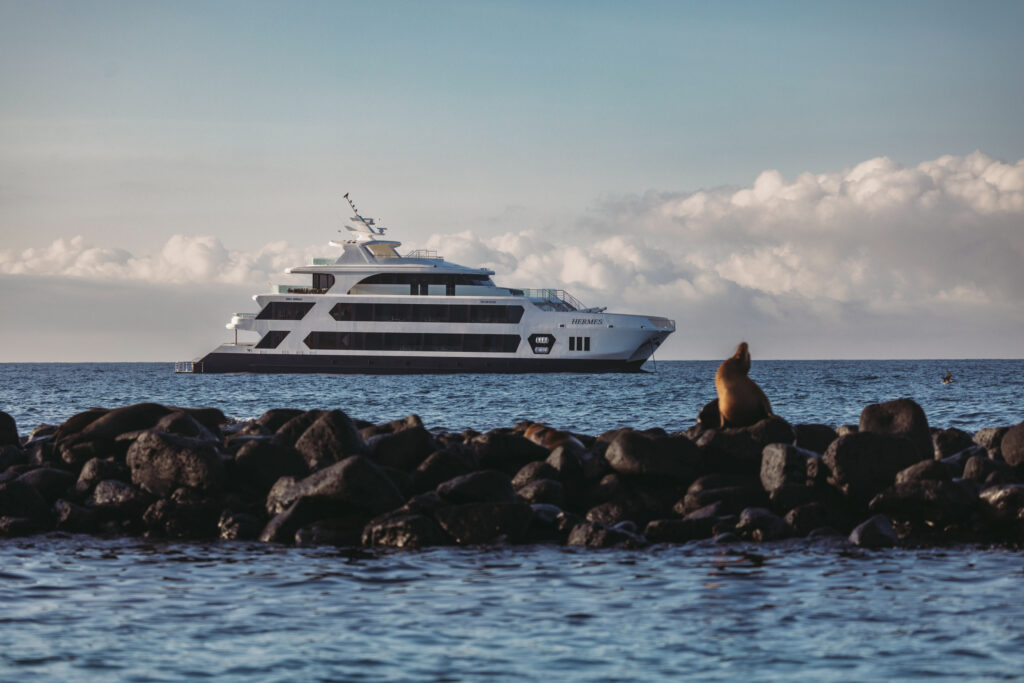A conversation with Jacques Devauges, the winemaker behind Burgundy’s growing estate.
Long celebrated for its iconic Clos des Lambrays, this historic Burgundy estate has entered a new golden age. Fuelled first by LVMH’s push for a significant foothold in the region and, since 2019, by the meticulous vision of Jacques Devauges, Lambrays is once again making waves among collectors and critics. Today, a portfolio of ten distinctive wines — each reflecting a compelling dialogue between tradition and progress — stands as testament to a remarkable rebirth.
LVMH’s Bold Intervention
LVMH’s acquisition of Domaine des Lambrays from the Freund family in 2014 marked the beginning of an ambitious new era. Their substantial investment has not only expanded vineyard holdings from 11.6 to 15.3 hectares — including a recently prized 0.3 hectare parcel of grand cru Clos de Vougeot — but also delivered a state-of-the-art winery, underscoring a commitment to both scale and quality. Today, this transformation yields a portfolio of distinctive cuvées, each defined by the unique nuances of its respective plot.
A Personal Perspective on Jacques Devauges
Having known Jacques Devauges for a decade — ever since he began his tenure at Clos de Tart — I have witnessed firsthand his meticulous, quietly intense approach to winemaking. Our annual tastings and continuing discussions reveal a vigneron driven by unrelenting precision and passion; qualities now vividly expressed in every aspect of the vineyard and cellar at Lambrays.

Jacques Devauges: The Quiet Alchemist
Jacques Devauges (b. 1975) took the helm at Lambrays in 2019 following acclaimed tenures at Domaine Michel Magnien, Domaine de l’Arlot and Clos de Tart, conveniently situated right next door to his current employer. He is admired for his quiet intensity and a multilingual, almost literary, approach to terroir. Devauges’ stewardship marks a significant shift: gone are the days of a single star cuvée in the Clos des Lambrays. Today, the estate offers a diverse, characterful portfolio to entice both devotees and open-minded Burgundy enthusiasts.
A Portfolio Reborn: Lambrays’ 10 Cuvées
Lambrays’ renaissance is best understood through the diversity and character of its current range which might surprise many fine wine lovers who are unaware of the estate’s recent expansion. Each cuvée’s identity is amplified by ever more precise, plot-driven winemaking:
| Cuvée | Hectares | Production (bottles/year) | Drinking Window | Key Notes |
| Clos des Lambrays Grand Cru | 8.7 | ~30,000 | 10–40+ years | Flagship cuvée. Nuanced and silky since the 2019 vintage. Complex and layered, with a core of red and black fruit, spice, and earth. |
| Clos Vougeot Grand Cru | 0.3 | ~1,800 | 10–30 years | LVMH addition; brooding, structured, deep and complex, with classic Clos Vougeot gravitas and dark fruit |
| Vosne-Romanée 1er Cru Les Beaux Monts | 0.45 | ~2,000 | 5–30 years | Perfumed, exotic spice, silk-textured; classic Vosne seduction — violets, rose, Asian spice, ripe cherry/raspberry |
| Nuits-Saint-Georges 1er Cru La Richemone | 0.9 | ~2,000 | 5–30 years | Velvet texture, persistent and powerful; dark fruit, mineral, grilled orange, hints of smoke, fine spice |
| Morey-Saint-Denis 1er Cru Les Loups | 0.85 | ~3,000 | 5–30 years | Structured, mineral, expressive; red fruits with firm backbone, touch of earth and energy |
| Morey-Saint-Denis 1er Cru Clos Sorbè | 1.25 | ~7,000 | 5–30 years | Exotic spice, lively acidity, savory and vibrant; floral high notes and red fruit |
| Morey-Saint-Denis 1er Cru Clos Baulet | 0.3 | ~1,500 | 5–30 years | Supple, vibrant, energetic; fresh red berries, light spice, approachable tannin |
| Morey-Saint-Denis Village | 1.7 | ~7,000 | 5–20 years | Elegant, red-fruited, sophisticated; lifted aromatics, silky medium body |
| Puligny-Montrachet 1er Cru Clos du Cailleret | 0.36 | ~2,000 | 10–30 years | Chiselled minerality, rare white; citrus zest, flint, chalk, precise |
| Puligny-Montrachet 1er Cru Les Folatières | 0.3 | ~3,000 | 10–30 years | Mineral, saline, intense, pure, white flowers, crushed stone |
All figures are subject to vintage variation
Domaine des Lambrays is no longer defined solely by its legendary Clos. Instead, it has been thoughtfully reimagined, parcel by meticulously tended parcel, as an estate whose wines — rooted in the sculpted hills of Morey, Vougeot, Vosne, Nuits, and Puligny — now articulate the complexity and grace of their assorted soils with newfound eloquence.
Vineyard and Winery: Precision, Restraint, and Organics
Parcel-by-Parcel Viticulture
Under Jacques Devauges, Domaine des Lambrays has evolved into a paradigm of micro-parcel precision. In the Clos des Lambrays itself, eleven plots are now specifically delineated, each vinified and matured individually in the domaine’s advanced gravity-flow winery. This gentle, hands-off approach allows the unique character of each site to shine, capturing subtle differences that lend the wines a thrilling clarity and tension.
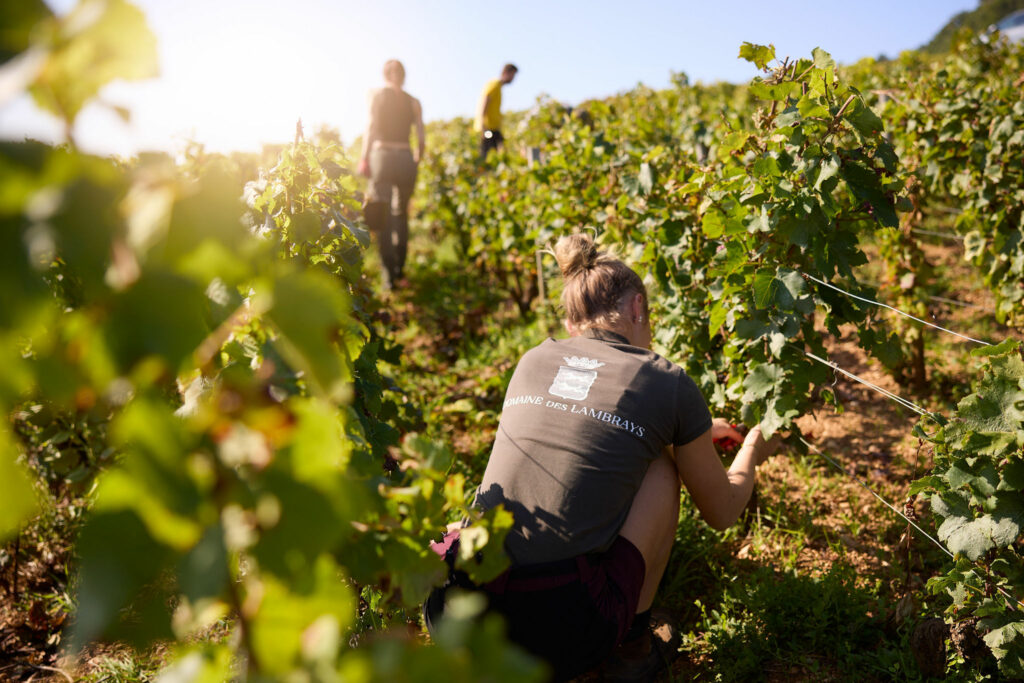
Precision in Winemaking
This philosophy is plainest in one of the estate’s two whites. Puligny-Montrachet Les Folatières, a fixture since its 1993 acquisition from Domaine Jean Chartron, has gained new linearity and mineral focus under Devauges — a wine that now hums with energy, aromatic purity, and detail.
Rigorous control of yields, never for fashion’s sake but always to sharpen site expression, runs as a thread throughout. Notably, Lambrays’ expanded range of single-parcel cuvées has won admiration for their distinctive precision and textural finesse, demonstrating that the estate has truly redefined itself beyond simply being the source of its historic Grand Cru.
Sustainable, Authentic Viticulture
Devauges championed a rapid conversion to organics (ECOCERT certified), with biodynamic practices swiftly following. The focus is on soil vitality — employing cover crops, minimal tillage, and careful canopy management. The result? Healthier vines, deeper root systems, and wines that pulse with the particular electricity and nuance of their origin.
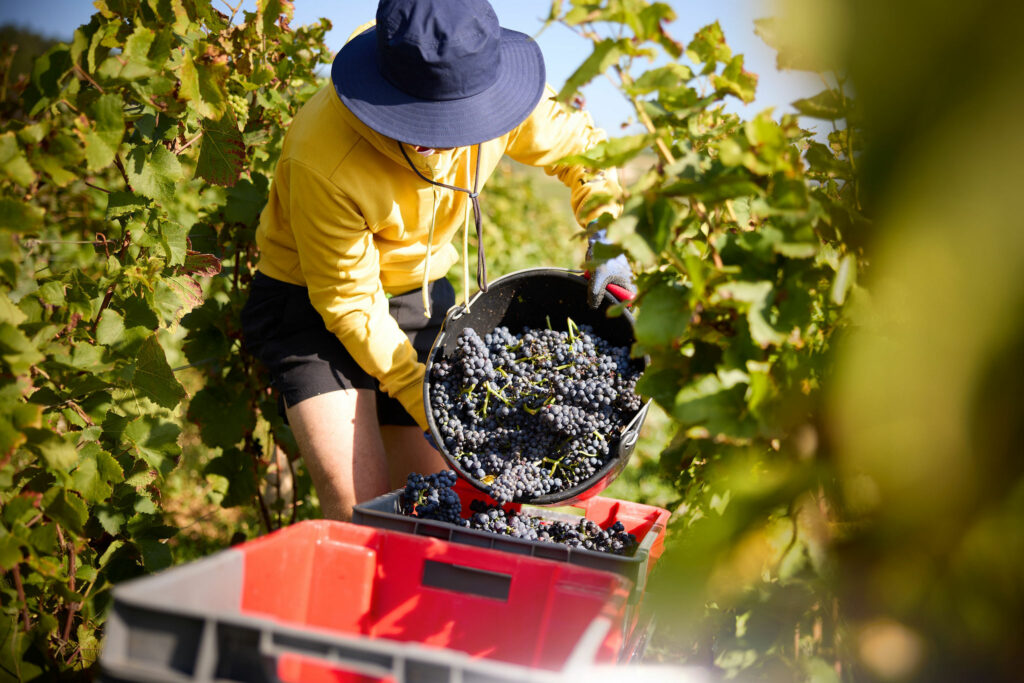
Oenological Evolution
2022 marked the first full vintage in the new gravity-flow winery, ensuring movement from grape to barrel is conducted without pumps. This facility houses nineteen custom cylindrical wooden fermenters from François Frères, specifically crafted for whole-bunch fermentations. Their innovative floating stainless-steel caps expel oxygen and encourage controlled, extended native yeast fermentations in wood — a technical refinement that is tangible in the bottle as more aromatic lift, sweeter tannins, and refined texture. Devauges notes that these changes result in wines less prone to early closure, retaining vivid expressiveness from barrel to youth.
The Living Legacy
Innovation at Lambrays is deeply rooted in a reverence for tradition. Having personally tasted bottles of Clos des Lambrays dating back to before the Second World War, I can attest to their remarkable complexity and freshness. Even in challenging vintages, these venerable bottles continue to surprise, revealing a singular, almost magical allure that defines the domaine.
As Devauges observes, “These historic bottles stand as a tribute to previous generations who, by necessity, practiced what we now consider organic viticulture: working with low yields, foregoing destemming, and fermenting in small wooden tanks. Their legacy continues to inspire everything we do today.”
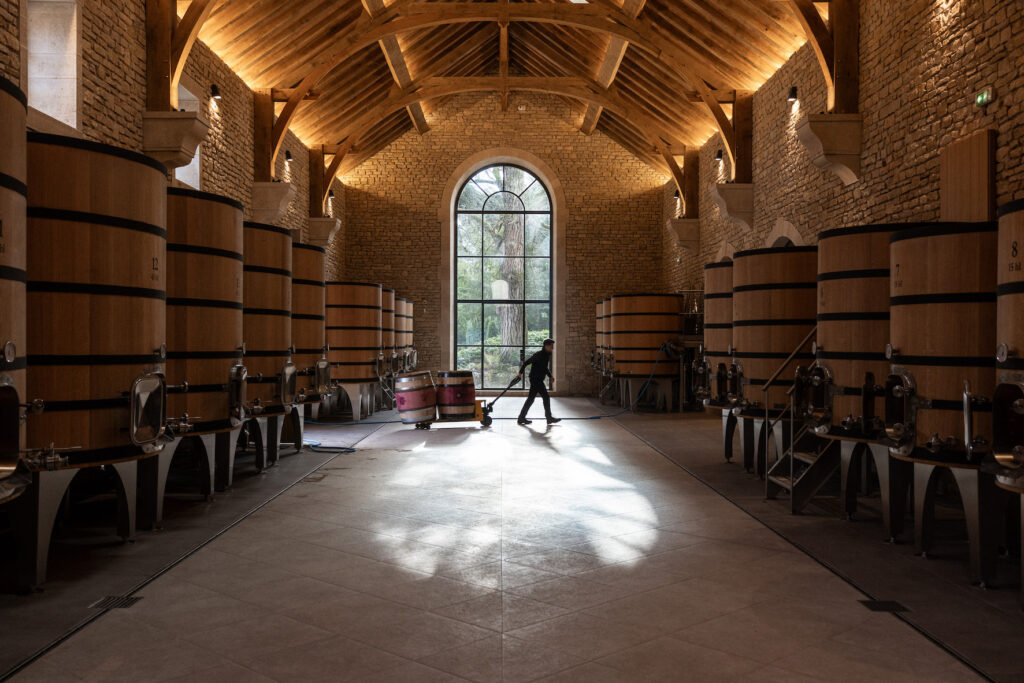
Pricing Changes
Lambrays’ pricing strategy — while surprising to some long-standing customers — mirrors the estate’s remarkable rise in quality, following a path set by Burgundy’s leading domaines. To illustrate: the 2018 Clos des Lambrays debuted at €265 per bottle (tax included); by 2023, that figure had climbed to €630.
This substantial price growth is not solely a function of evolving global fine wine markets. It also reflects genuine strides in quality, critical acclaim, and Domaine des Lambrays’ revitalized reputation. Devauges defends the move, citing the recent vintages’ widely recognized balance, precision, and complexity — hallmarks that now see Clos des Lambrays consistently ranked among Burgundy’s top grands crus. Despite this ascent, Devauges remarks that Clos des Lambrays remains a relative bargain compared to its most celebrated peers in Burgundy’s elite.
The Clos That Isn’t Quite a Monopole
A lingering curiosity in Burgundy is that Clos des Lambrays, though almost entirely unified, is not a true monopole. The exception is a single, tiny parcel — one ouvrée (about 428 square metres) — owned by Domaine Taupenot-Merme. Originally a family garden and only planted with vines in 1974, this small holding prevents Domaine des Lambrays from claiming sole ownership.
In Burgundy, where most grands crus are fragmented among many growers, a monopole is highly coveted for the control and singularity it offers. Today, Taupenot-Merme owns just 0.46% of Clos des Lambrays, producing a single small barrel each year — typically fetching a premium over Lambrays’ own wine. Despite polite attempts by Lambrays to acquire it, Taupenot-Merme remains attached to their sliver of vineyard.
This respectful stalemate highlights enduring Burgundian traditions, where family heritage and the individuality of each parcel are deeply cherished — reminders that land here is far more than a commodity.
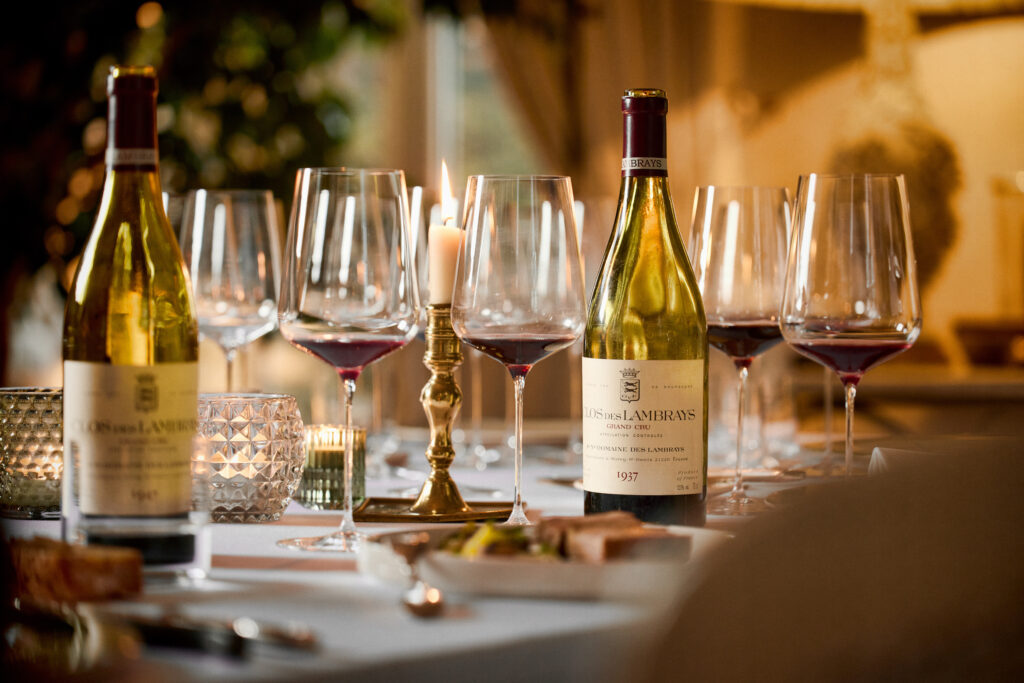
2023 Vintage: Tasting Notes
The 2023 harvest at Domaine des Lambrays was marked by precise picking decisions, with a keen eye toward avoiding overripeness. Whites were harvested beginning on 1 September, followed by the reds between 7 and 14 September. The approach in the cellar remains tailored: whites are matured without new oak, while the reds see a careful gradation — 30% new oak for the village cuvée, 40% for the premiers crus, and 55% for Clos des Lambrays itself. A variety of coopers are employed, allowing each cuvée’s personality to shine.
Clos des Lambrays Grand Cru
A wine of remarkable freshness (pH 3.68): dark fruits layered over subtle red raspberry, with a reserved nose but an exceptionally silky palate. Sweet spice, lift, and beautifully integrated tannins, with oak playing a background role. Impressive length, tension, and precision — an outstanding Clos in a vintage that demanded constant attention.
Vosne-Romanée 1er Cru Les Beaux Monts
Dazzling complexity is on show, with a spicy-floral nose, red and dark fruits, and a seductively silky palate. Subtle power underpins its lingering length (13.5% ABV); utterly sophisticated, with lifted, cool red fruit at the core.
Nuits-Saint-Georges 1er Cru La Richemone
A “little jewel” abutting Vosne but distinctive: dark fruit, sweet spice, and a plush, rounded structure. There’s compelling power, impressive persistence, and notable complexity (14% ABV) — a striking debut for Lambrays in Nuits.
Morey-Saint-Denis 1er Cru Les Loups
From deeper, clay-rich soils and a warmer plot, Les Loups expresses ripe fruit, a pronounced floral bouquet, and supple yet sticky tannins. There’s good length and a restrained mineral vein; muscular but not aggressive. Will reward cellaring (13.8% ABV).
Morey-Saint-Denis 1er Cru Clos Sorbè
On distinctive red soils located close to the domaine, Clos Sorbè showcases crystalline raspberry fruit, refined tannins, and notable depth. It’s more concentrated than Clos Baulet, complete and vibrant — perhaps the most “Lambrays-like” of the premiers crus, exhibiting a focused, persistent finish (14% ABV).
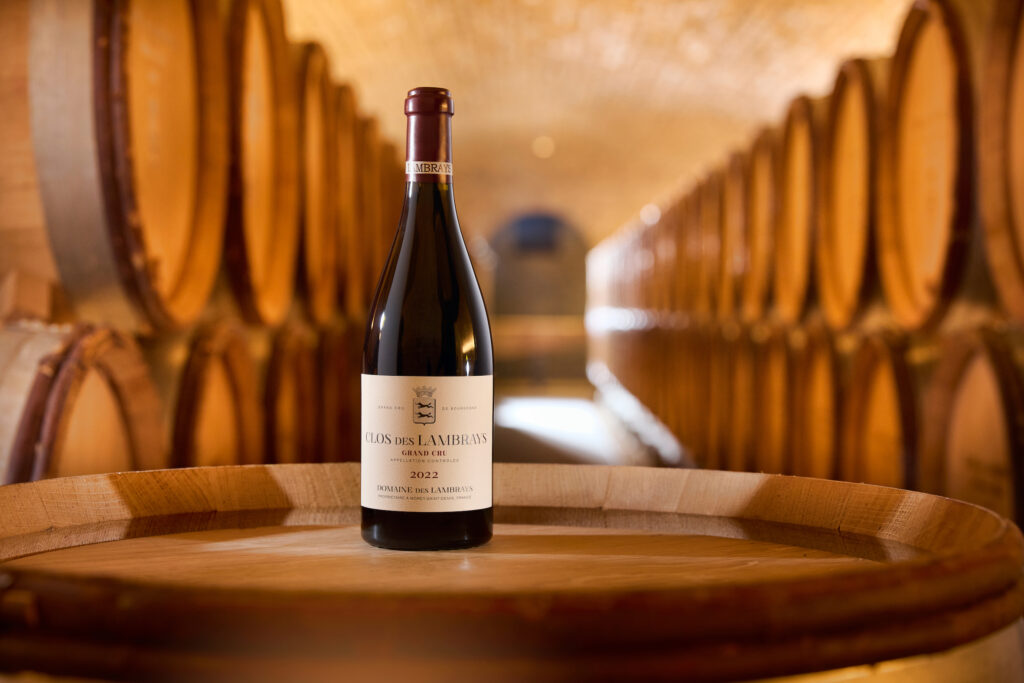
Morey-Saint-Denis 1er Cru Clos Baulet
Distinctive brown soils, directly across from the Clos Sorbè, give rise to a plush, spicy nose and early complexity. Tannins are rounded and the finish is persistent, producing a singular, characterful, and intriguing wine from one of Morey’s smallest premiers crus.
Morey-Saint-Denis Village
Sourced higher on the slope, this cuvée displays crushed raspberry and floral notes, intense red fruit, and lively acidity (pH 3.6), with a bright, fresh attack. More elegant and persistent than typical lower-slope village wines.
Puligny-Montrachet 1er Cru Clos du Cailleret
Striking for its steely, laser-focused nose of minerals and bright lemon fruit, offering piercing acidity and a sensation even sharper than Folatières (pH 3.22, 13.5% ABV). Structure and dry extract lend persistence and elegance; a pristine, enduring wine.
Puligny-Montrachet 1er Cru Les Folatières
Recently bottled, this is a powerful, energetic wine showing both stone and orchard fruit, vivid acidity (pH 3.22), and a tingling mineral finish. There’s no heaviness — just linear drive, impressive concentration, and a shift from previous richness toward chiselled tension. 13.4% ABV.
Lewis Chester DipWSET is a London-based wine & rare spirit collector and writer, member of the Académie du Champagne and Chevaliers du Tastevin, co-founder of Liquid Icons and, along with Sasha Lushnikov, the founder of the Golden Vines® Awards. He is also Honorary President and Head of Fundraising at the Gérard Basset Foundation, which funds diversity & inclusivity education programmes globally in the wine, spirits & hospitality sectors. The Golden Vines® 2025 will take place in Miami, USA between 7-9 November 2025, recognising the world’s best fine wine estates as voted by hundreds of fine wine professionals. Please register your interest for tickets on the website: liquidicons.com/work/golden-vines-awards.

